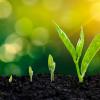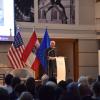
In February 2024, a new EU-funded project kicked off. CROPS – short for curating, replicating, orchestrating, and propagating citizen science across Europe – is a three-year project that brings together six partners from six different countries to develop and demonstrate a modern, inclusive mechanism to support the upscaling of citizen science activities in Europe and beyond.
Even though citizen science is a proven and accepted methodology across a wide range of scientific disciplines, some challenges remain.
To explore the full potential of citizen science, local projects should be upscaled to a transnational level, with common protocols on data collection, sharing and accessibility. However, since many citizen science projects start on a small scale, they lack the tools and experience to overcome the technical, practical, and conceptual challenges required for upscaling.
This is where CROPS comes in. The project aims to inform and evolve the EU Research & Innovation system so it can adequately support the transition of citizen science from a small-scale to a Europe-wide level, moving it towards a modern, open-science approach.
“CROPS will make a great contribution to our work on leveraging citizen science to monitor and achieve sustainable development. It will help us identify and support citizen science initiatives that have potential to be upscaled and mainstreamed within and beyond Europe to support the EU Missions and sustainable development related frameworks such as the Sustainable Development Goals (SDGs),” explains Dilek Fraisl, a researcher in the Novel Data Ecosystems for Sustainability Research Group of the IIASA Advancing Systems Analysis Program.
The project will also develop protocols, resources, and examples of the best upscaling practices.
Citizen science is applied across all the areas of the Horizon Europe EU Missions: adaptation to climate change including societal transformation; cancer; healthy oceans, seas, coastal and inland waters; climate-neutral and smart cities; and soil health and food. CROPS will consider different projects and initiatives from each of these topics, to cover as many fields of citizen science application as possible.
The project relies on the complementary expertise of six partners from six different countries including INOVA+ (Portugal), the coordinator of the project, EarthWatch Europe (UK), IIASA (Austria), Ideas for Change (Spain), European Schoolnet (Belgium), and OutBe (Italy).
In CROPS, IIASA will lead the work on developing protocols and strategies for upscaling citizen science, ensuring the scientific relevance and legitimacy of the citizen science projects identified for upscaling; and producing guidelines for data interoperability, FAIR principles, open software, and repositories to ensure the scalability of citizen science initiatives with potential.
Follow CROPS and watch it germinate, grow, and propagate bringing citizen science and EU research to a new level.
Further information:
www.crops-cs.eu
News

26 July 2024
Navigating new horizons to protect human and planetary health

14 June 2024
IIASA Leadership visits Washington DC

05 June 2024


